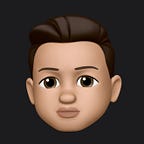Leisure for All
“Leisure should be for everyone but is it equal for all ?”
“Leisure for All” is an interactive data-visualization which utilizes Yelp’s open dataset to visualize universal accessibility of restaurants in Pittsburgh. Visualization can also be used as a tool for decision-making if going out to eat.
Duration: 4 Weeks
Team: Meric Dagli, Vikas Yadav
Role: Data Research, Graphic Design, Invision Prototype
Tools Used: Autocad, Illustrator, InVision, After-Effects
PROMPT
Dive in the process of conceiving and crafting, visual, aural and temporal representations of data that communicates information in way that is useful, usable and desirable. Pay close attention to patterns that emerge.
INITIAL RESEARCH
First challenge of this project was to search for a relevant dataset which can express our intentions of mapping equality in leisure. Dataset should be rich enough to express multiple factors which can collectively express an overarching concern for equality in leisure. Max Neef’s classification to fundamental human needs guided us to next points of exploration.
“ Food is the most common type of Leisure people engage into.”
After searching for a couple of days, we decided on using Yelp’s open dataset which they provided publicly as part of their “Dataset Challenge”. Provided dataset covered all American restaurants. It contained data of over 86k businesses and over 566k business attributes like hours of operation, parking availability, ambience, etc. From this point onwards we decided to focus on restaurants of Pittsburgh and attributes related to universal accessibility.
PURGING DATASET
We used Google Data Studio to purge and better understand out data before delving in the process of creating appropriate representations. Our expectation was to understand and establish a purpose for presenting the information.
GENERATIVE PHASE
The most important question at this point was to identify factors that are key to a restaurant’s accessibility. After purging our dataset from data studio, we organized and mapped significant attributes/categories of data based on classroom exercises and internal discussions with faculty members. Besides accessibility, these attributes lay foundation for restaurants overall popularity.
CRAFTING A SCRIPT FOR VISUALIZATION
Before working on the visual language, we worked on a script of how we want to architect the entire visualization, breaking down to individual stages. A well crafted script can guide us to the final form and address crucial question like: Where will this visualization live? What platform is most appropriate: mobile or web?
REFINEMENT PHASE
We took help from Nathan Yau’s book “Data Points” to design a visually cohesive design language. Book provided a better understanding of using distinctive visual cues. It suggests that strategic data overlay and less taxing visual language is delightful and sometimes could reveal hidden information.
By the end of script, it was clear that visualization had to live on the web platform, through an interactive visualization which should be advertised on yelp’s main website.
STAGE 1: OVERALL ACCESSBILITY
Entrance screen is an overall mapping of Pittsburgh’s restaurants, neighborhood-wise.
Dataset: Wheelchair access
Visual Representation: THIN Strokes (Restaurants with no wheelchair access) / THICK Strokes (Restaurants with wheelchair access)
STAGE 2 : ATTRIBUTES CONTRIBUTING TO ACCESSIBILITY
Each neighborhood can be accessed in detail with individual restaurants. The UI is mostly composed of classical toggle button type interaction. Here, East Liberty has been laid out.
Dataset : Names of restaurants coupled with an interactive UI
Visual Representation : Same language from Stage 1 has been used to represent individual restaurants
Cuisine toggle activates a dropdown menu which enlists all cuisines available in the neighborhood. For assistance we have marked each cuisine using color with respective flag of the country of cuisine origin.
Dataset : Cuisine
Visual Representation : Color, flag of country of origin
Dataset : Price Range
Visual Representation : Length of stroke representing individual restaurant
Dataset : Ratings
Visual Representation : White dots
Dataset : Free wifi and Alcohol
Visual Representation : Literal symbol for wifi, Haze for alcohol (overlaid on stroke of respective restaurant)
Dataset : Good for Groups
Visual Representation : Distance between “Ratings” dots
Dataset : Good for Kids
Visual Representation : Size of “Ratings” dots
Dataset : Home Delivery
Visual Representation : Symbol for home
We also designed isolation mode where people can see all details in isolation for each restaurant.
If you like a particular restaurant, clicking on it will take you to Yelp’s main website for contact details.
INVISION PROTOTYPE
